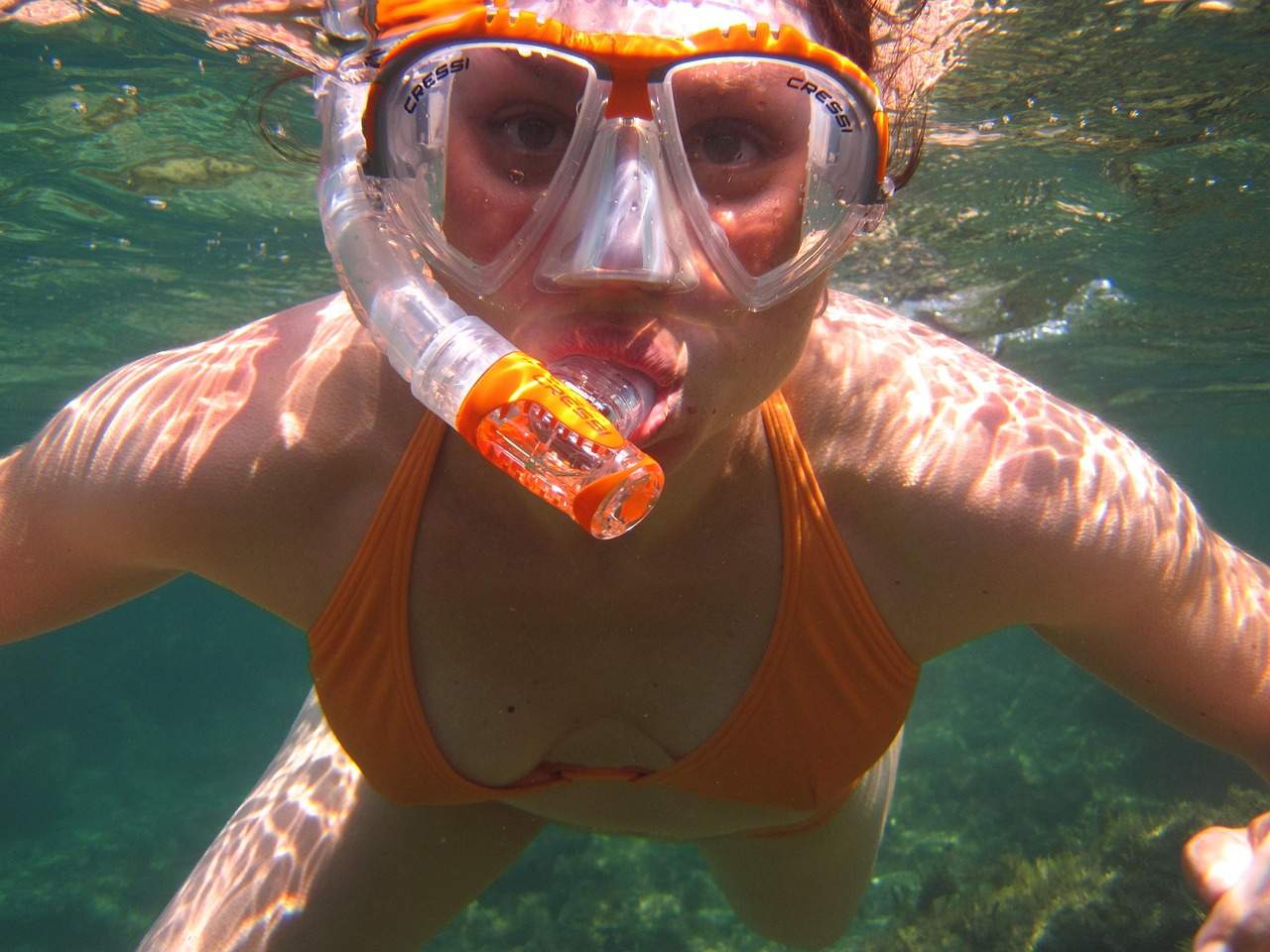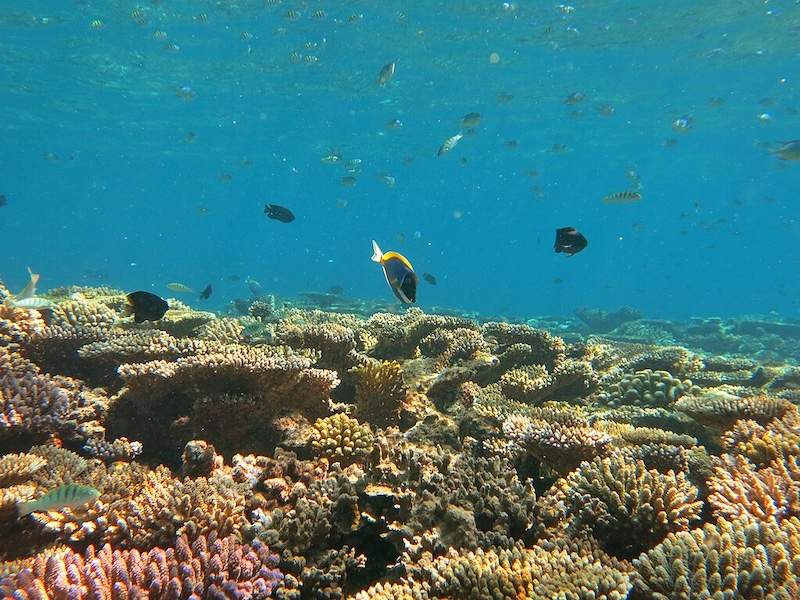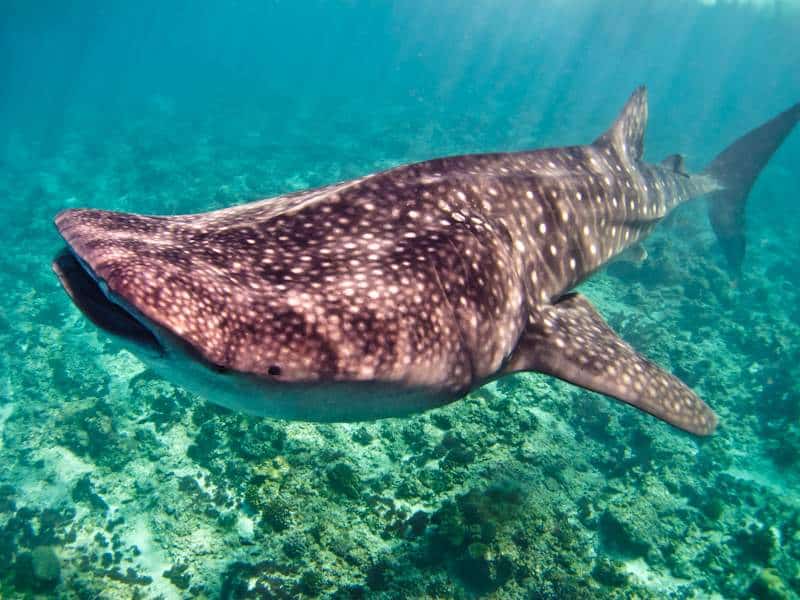Snorkelling in the Maldives: Best House Reefs, Lagoons, Mantas and Family Tips
The Maldives offers some of the world’s most accessible snorkeling—crystal-clear lagoons steps from your villa, house reefs teeming with tropical fish, and seasonal encounters with whale sharks and manta rays that will leave you breathless. With year-round warm water and visibility that often exceeds 20-30 meters, you can literally walk into paradise from most beaches. The key is choosing the right island, timing your visit properly, and knowing what to expect from different types of underwater terrain.
If you’re still planning flights, transfers and where to stay, start with the ultimate Maldives travel guide for the complete picture.
How Maldives Snorkelling Works (Quick Primer)
Understanding Maldivian underwater geography makes the difference between floating over barren sand and discovering underwater worlds that rival any aquarium.
- House Reefs vs Lagoons serve different purposes in your snorkeling adventure. A house reef is the coral reef system that surrounds or borders your resort island, typically featuring a drop-off where shallow coral areas plunge into deeper blue water. This is where you’ll find the most diverse marine life—think colorful reef fish, rays, sharks, and turtles living in their natural coral city.
- Lagoons are the shallow, protected areas between the beach and house reef, usually 1-3 meters deep with sandy bottoms and scattered coral patches. They’re perfect for beginners, children, and those calm morning sessions when you want to ease into the day.
- The drop-off is the magic zone where lagoon meets open ocean. This depth change creates upwelling currents that bring nutrients, attracting everything from small reef fish to cruising sharks. It’s also where you’ll get that incredible sensation of peering into seemingly endless blue water.
Current and visibility patterns change with tides and monsoons, but generally remain manageable for snorkelers. Most house reefs have designated entry points with ladders or beach access, plus marked channels to guide you safely to the best spots. Seasonality affects water clarity and marine life concentrations—see best time to visit the Maldives for timing details. Picking the right location is crucial—check where to stay in the Maldives for accommodation guidance.
Best Atolls and Islands for Snorkelling
Ari Atoll (North & South)
Why it’s Great: Year-round whale shark encounters in South Ari, plus reliable turtle and reef shark sightings throughout both atolls. House reefs here tend to be healthy and fish-rich, while boat trips can access some of the country’s most famous marine encounters.
The combination of accessibility and world-class marine life makes Ari Atoll ideal for first-time visitors who want guaranteed underwater action. South Ari’s whale shark sites require only basic swimming skills but deliver bucket-list experiences. Compare options in best islands in the Maldives and plan encounters through swimming with manta rays and whale sharks in the Maldives.
Baa Atoll (Hanifaru Bay Area)
Why it’s Great: The legendary UNESCO Biosphere Reserve hosts seasonal manta ray aggregations that can involve hundreds of individuals feeding together. It’s primarily a snorkeling-only zone, making it accessible to non-divers.
Hanifaru Bay requires permits ($20-30 per person) and operates strict visitor limits—only 45 people in the bay at any time, with 45-minute maximum visits. The experience is regulated but absolutely worth the logistics for manta enthusiasts. Peak season runs May through November, with July-October offering the most reliable encounters. Timing windows in best time to visit the Maldives.
North & South Malé Atolls
Why it’s Great: Maximum resort density means excellent infrastructure, easy transfers from the airport, and consistently maintained house reefs suitable for all skill levels.
These atolls offer the most beginner-friendly experience with reliable conditions, plenty of marine life education programs, and easy access to both resort house reefs and day-trip excursions. Perfect for families or mixed-ability groups who want predictable snorkeling without long transfers. Resort selection guidance in where to stay in the Maldives.
Vaavu & Rasdhoo
Why it’s Great: Less crowded atolls with dramatic drop-offs, clear water, and regular encounters with nurse sharks, rays, and reef sharks. Better for confident swimmers who appreciate more challenging conditions.
These atolls reward intermediate snorkelers with wilder, less touristy experiences. The house reefs tend to have stronger currents and more dramatic topography—think steep walls and pinnacle formations that attract larger marine life.
The Best House Reefs (What to Look For)
Choosing a resort with an excellent house reef can make or break your snorkeling holiday. Here’s how to evaluate beyond the marketing photos.
- Distance from Shore matters enormously. The best house reefs start within 50-100 meters of the beach, with clear marked channels guiding you to the drop-off safely. If you have to swim 300+ meters through empty lagoon to reach coral, you’ll tire before reaching the good stuff.
- Drop-off Depth and Accessibility determines your marine life encounters. Look for house reefs where the drop-off begins at 5-15 meters depth—shallow enough for comfortable snorkeling but deep enough to attract pelagics. Gradual slopes offer easier exploration than vertical walls.
- Live Coral Cover directly correlates with fish diversity and numbers. Healthy reefs show vibrant colors in photos, with minimal bleaching or dead coral areas. The best Maldivian house reefs feature mixed hard and soft corals creating complex habitats.
- Entry Points and Safety Features include beach access, jetty ladders, and dive center support. The top-rated properties provide multiple access points, current information, and on-site marine biologists for guidance.
Resorts consistently praised for house reef quality include Anantara Kihavah, Baros, Angaga Island, Vilamendhoo, and Six Senses Laamu. However, coral health changes over time, so recent guest reviews matter more than historical reputation. Balance quality expectations with budget in Maldives on a budget and accommodation selection via where to stay in the Maldives.
Calm Lagoons and Family-Friendly Snorkelling
Families with children need different snorkeling conditions than experienced adults, and the Maldives delivers excellent options for young water explorers.
- Shallow Lagoons provide perfect training grounds for kids aged 5 and up. Water depths of 1-2 meters allow children to stand when needed while still offering glimpses of tropical fish and coral formations. Properties like Baros, Biyadhoo Island, and Soneva Fushi excel at creating safe lagoon experiences.
- Essential Family Features include gradual beach entries, life jacket availability, and dedicated children’s snorkeling programs with marine biologists. The best family resorts offer guided kids’ sessions that combine safety with education about reef ecosystems.
- Fish-Feeding Policies vary by resort, but responsible properties avoid artificial feeding that disrupts natural behavior. Instead, they focus on teaching children to observe fish in their natural habitat.
- Jetty Access can provide easier water entry for less confident swimmers, plus opportunities to spot fish that gather around pier structures. However, always check current conditions as jetties can experience stronger flows.
Top family-friendly properties combine calm lagoons with engaging kids’ clubs and snorkeling instruction.
Manta Rays, Whale Sharks and Turtles (Snorkel Highlights)
These gentle giants represent the pinnacle of Maldivian snorkeling, but timing and location knowledge makes all the difference between disappointment and life-changing encounters.
- Manta Ray Behavior centers around feeding aggregations during plankton blooms. In Hanifaru Bay, mantas gather in shallow water (2-10 meters) to filter feed, creating incredible snorkeling opportunities from May through November. The rays often ignore snorkelers, allowing close (but respectful) encounters.
- Whale Shark Encounters happen year-round in South Ari Atoll, though August-November provides the most reliable sightings. These massive filter feeders cruise slowly at or near the surface, making them perfect for snorkeling rather than diving. Encounters typically last 15-45 minutes.
- Turtle Hotspots include seagrass areas where green turtles feed and cleaning stations where hawksbill turtles visit. Many house reefs support resident turtle populations, making encounters possible on daily snorkeling sessions rather than special trips.
Wildlife Etiquette requires minimum distances—3 meters from manta rays, 4 meters from whale sharks, and no touching or chasing of any marine life. Flash photography is prohibited, and motorized equipment isn’t allowed in protected areas.
Boat Trips vs House Reefs serve different purposes. House reefs offer frequent, predictable encounters with smaller species and resident turtles. Boat trips provide access to seasonal aggregations and pelagic encounters that justify their higher costs and time commitment.
When to Go for the Clearest Water and Calm Seas
Timing your snorkeling trip around weather patterns dramatically affects your underwater experience and photo opportunities.
- Dry Season (December-April) delivers the most reliable snorkeling conditions with 8-10 hours of daily sunshine, minimal rainfall, and calm seas. Visibility often exceeds 30 meters, making this ideal for underwater photography and nervous beginners. However, you’ll pay peak season prices and encounter more crowded reefs.
- Northeast Monsoon Effects during dry season mean protected western sides of atolls offer the calmest conditions, while eastern exposures might have slightly more wave action. This affects resort selection if you’re particularly concerned about water entry conditions.
- Wet Season (May-November) brings more variable conditions but incredible wildlife opportunities. Plankton blooms reduce visibility to 15-25 meters but attract manta rays and whale sharks in massive numbers. The trade-off between perfect conditions and spectacular encounters defines this period.
- Southwest Monsoon Patterns reverse the protection zones—eastern atoll sides become calmer while western sides face stronger currents and wave action. Understanding these patterns helps choose the right resort location for your travel dates.
Monthly Nuances matter for planning. February-March offer peak dry conditions, while September-October provide the best balance of improving weather and active marine life. November represents a sweet spot with calmer seas and increasing wildlife activity.
Resort-Based Snorkelling vs Guided Boat Trips
Choosing between house reef exploration and boat excursions depends on your priorities, swimming ability, and marine life goals.
- Resort House Reef Advantages include unlimited access, no time constraints, and familiarity with conditions. You can snorkel multiple times daily, perfect for photography, and gradually explore different reef sections. It’s also much more economical since most resorts include house reef access in accommodation rates.
- Boat Trip Benefits provide access to pristine sites, sandbank visits, and seasonal wildlife encounters impossible from shore. Professional guides offer safety supervision, marine life identification, and optimal timing for conditions.
Decision Factors include group swimming ability, budget constraints, and wildlife priorities. Families with mixed ages often prefer house reef flexibility, while wildlife enthusiasts justify boat trip costs for specific encounters.
Safety Considerations favor boat trips for less confident swimmers, as guides provide supervision and safety equipment. However, strong swimmers often enjoy house reef independence and the ability to explore at their own pace.
Cost Comparisons show significant differences. House reef snorkeling costs nothing beyond accommodation, while boat trips range from $50-150 per person depending on duration and destinations. Budget planning in how much does a Maldives trip cost. For snorkel-friendly boat-based travel, consider liveaboard diving in the Maldives.
Essential Snorkelling Safety and Reef Etiquette
Maldivian snorkeling involves real ocean conditions that require preparation and respect for both marine life and personal safety.
- Buddy System remains essential even in calm lagoons. Always snorkel with a companion and maintain visual contact throughout your session. Currents can change quickly, and help is crucial if equipment fails or fatigue sets in.
- Current Assessment should happen before every snorkeling session. Check with dive centers about tidal timing and current strength, particularly around drop-offs and channels. Strong currents can sweep snorkelers away from access points quickly.
- Reef Contact causes environmental damage and personal injury. Never stand on, touch, or grab coral—it’s living and fragile. Coral cuts heal slowly and can become infected in tropical conditions.
- Marine Life Distance rules protect both animals and humans. Maintain 3+ meters from rays and sharks, never chase or corner marine life, and observe feeding behavior without interference. Reef sharks are generally harmless but deserve respect as wild apex predators.
- Sun Protection becomes critical during extended snorkeling sessions. Reef-safe sunscreen protects coral ecosystems while preventing burns. UV-protective clothing provides better coverage than chemical sunscreens alone.
- Emergency Preparedness includes understanding local rescue procedures and carrying safety equipment like whistles and inflatable safety markers. Many resorts provide safety briefings—attend them even if you’re experienced.
Gear Checklist for Perfect Snorkel Days
Quality equipment makes the difference between struggling with leaky masks and effortless underwater exploration.
Essential Personal Items:
- Low-Volume Mask: Personal fit prevents leaking and provides comfort during long sessions. Prescription masks available for vision correction.
- Comfortable Snorkel: Dry-top designs prevent water entry during surface swimming
- Short Fins: Provide efficient propulsion without excessive leg strain. Full-foot fins work well in warm water.
- Rash Guard/UV Suit: Essential sun protection during extended sessions. UPF 50+ rating recommended.
Convenience Additions:
- Defog Solution: Prevents mask fogging in humid conditions
- Reef-Safe Sunscreen: Protects skin while preserving coral health
- Booties: Protect feet during jetty entries and reef walking
- Dry Bag: Keeps phones, cameras, and spare clothes dry
Optional Photography Gear:
- Compact Action Camera: GoPro-style cameras with floatation attachments
- Underwater Camera Housing: For serious photography enthusiasts
Rental vs Personal Equipment depends on trip frequency and quality standards. Masks require personal fitting, while fins and snorkels rent satisfactorily at most resorts. Professional dive centers typically offer higher-quality rental equipment than resort water sports centers.
Complete packing guidance in what to pack for a Maldives trip.
Sample 3-Day Snorkelling Plan (House Reef + Highlights)
This progression maximizes your snorkeling experience while building confidence and knowledge.
Day 1: House Reef Reconnaissance
- Morning: Attend resort snorkeling briefing and equipment fitting
- Mid-Morning: First house reef session focusing on entry points, current assessment, and shallow lagoon exploration
- Afternoon: Extended house reef exploration targeting drop-off areas and marine life photography
- Evening: Review marine life identification guides and plan Day 2 activities
Day 2: Guided Marine Encounters
- Early Morning: Boat trip to manta or whale shark sites (seasonal availability)
- Late Morning: Return and rest/process morning experience
- Sunset: Calm lagoon snorkeling session focusing on different light conditions and evening marine activity
Day 3: Independence and Exploration
- Morning: Sandbank and outer reef excursion (half-day boat trip)
- Afternoon: Solo house reef exploration, attempting deeper drop-off areas and longer sessions
- Evening: Relaxed jetty snorkeling or night snorkeling experience (if available)
This schedule balances guided safety with independent exploration while accommodating different marine life encounter opportunities. Adapt timing based on seasonal wildlife windows via best islands in the Maldives and swimming with manta rays and whale sharks in the Maldives.
FAQs
Is the Maldives good for beginner snorkellers?
Absolutely. Shallow lagoons, warm water (27-30°C year-round), and excellent visibility create perfect learning conditions. Many resorts offer guided instruction and provide flotation aids for nervous beginners. Start in lagoon areas before progressing to house reef drop-offs.
Where is the best house reef in the Maldives?
Anantara Kihavah, Baros, and Vilamendhoo consistently rank among the top properties for house reef quality. However, coral health changes over time, so recent guest reviews matter more than historical rankings. Focus on properties with drop-offs within 100 meters of shore.
Can you see manta rays while snorkelling in the Maldives?
Yes, particularly at Hanifaru Bay in Baa Atoll during May-November. These encounters happen in shallow water (2-10 meters) perfect for snorkeling. However, permits are required and visitor numbers are strictly limited to 45 people at any time.
Which month has the best snorkelling conditions?
February-March offer the most reliable calm conditions and clear visibility, ideal for beginners and photography. However, May-October provides better wildlife encounters despite more variable weather. November offers a good balance of improving conditions and active marine life.
Do I need fins for lagoon snorkelling?
While not essential in very shallow areas, fins significantly improve your experience by reducing fatigue and providing better control in currents. They’re particularly important around house reef drop-offs where gentle currents are common. Most resorts provide rental fins.
Summary: Choose the Right Island, Month and Reef
Successful Maldives snorkeling comes down to matching your accommodation, timing, and expectations with your skill level and marine life priorities. House reef enthusiasts should prioritize properties with healthy coral systems within easy swimming distance of the beach—think Anantara Kihavah or Baros for luxury, or Angaga Island for better value. Wildlife chasers need to plan around seasonal windows, particularly May-November for manta rays and year-round for whale sharks in South Ari Atoll.
Families require calm lagoons and gradual entries, making North and South Malé Atolls ideal for their infrastructure and safety features. Advanced snorkelers seeking less crowded experiences should consider outer atolls like Vaavu or southern properties where dramatic drop-offs and stronger currents attract more diverse marine life.
The timing trade-off between perfect conditions and incredible encounters defines Maldivian snorkeling. Dry season delivers postcard conditions but costs more and offers fewer wildlife encounters. Wet season provides spectacular marine life aggregations but requires flexibility with weather conditions and water clarity.
Remember, even “mediocre” snorkeling in the Maldives exceeds most destinations worldwide. Focus on realistic expectations, proper preparation, and respectful marine life encounters rather than chasing social media perfection. The underwater world here rewards patience and environmental awareness more than expensive equipment or perfect timing.
For transfers, stays and broader planning, use the ultimate Maldives travel guide.



